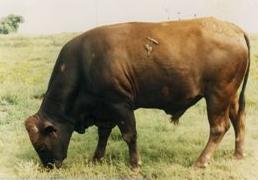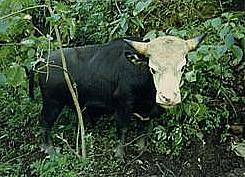Integrated Conservation Research, Inc.
(www.incores.org)
This year, 2008, is the 20th anniversary of Integrated Conservation Research, Inc. (ICR). ICR is dedicated to the conservation and reclamation of tropical rain forests. Though we can look back with some pride to having completed 11 successful projects in seven countries in Asia, Latin America, and Africa, we have not yet put into effect the full potential of our tropical rainforest conservation strategy.
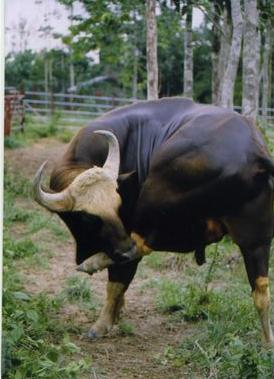
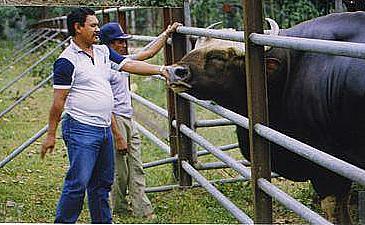
All of our clients, both government and private, have chosen only one element of our conservation strategy: nature tourism (eco-tourism) to demonstrate economic benefits of tropical rainforest conservation. All of the projects have been economic successes. Some have become incredible sources of revenue for providing economic alternatives to rainforest destruction or poaching of endangered species. The canopy walkway system ICR developed in Kakum National Park in Ghana, for Conservation International, for example, earned over US$1 million annually by 2005. The initial investment was less than $400,000.
No doubt, nature tourism has a role in conservation. But, we have made calculations in Malaysia, based on four tourism projects featuring canopy walkways we have completed (not including the world's first canopy walkway that was used in support of research in 1968-1974), regarding the economic role of nature tourism in rainforest conservation. Even on the basis of the most optimistic projections of growth, nature tourism could support economically only less than 5 per cent of the remaining Malaysian rainforests. On a global basis it would amount to much less.
Clearly, much more needs to be done. The tide of deforestation has not been turned or even reduced in the last 20 years. Poaching continues, even in forests where we have worked that have recently been designated as United Nations "World Heritage Sites."
So, what else can be done?
In many areas the main threat to rainforests is deforestation for agricultural development, especially creating pasture for beef. As strange as it may sound, the solution to this problem could be a "cow."
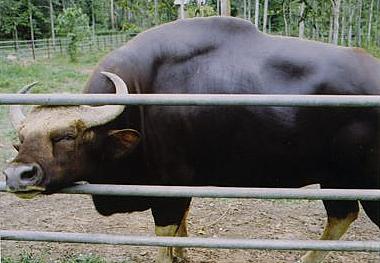
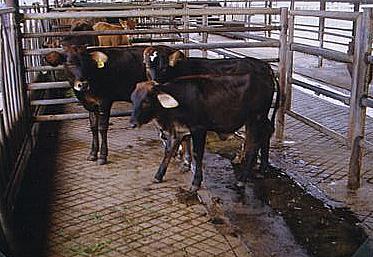
One of the most threatened rainforest species of mammals in Southeast Asia is the gaur (Bos gaurus). A separate species, it is a relative of European cattle (Bos taurus) and Indian or zebu cattle (Bos indicus). When I lived in Malaysia (1968-74), gaur were still fairly common. Latest estimates by the Department of Wildlife and National Parks are between 200 and 300 animals remaining in the wild. In Thailand, even fewer exist and in Southern China where we worked, official estimates in the early 1990's were about 600. But, based on interviews with Yau minorities who hunt them, I believe the numbers were far fewer. A Yau shaman (medicine man) showed me a muzzle-loader which the Yau manufacture for themselves. Some households had 2 or 3 guns.
"With this gun I have shot over 200 gaur in my life-time," he said.
In that area of China, southern Yunnan Province, Yau villages are many, as well as, in Laos and Vietnam.
Apart from humans, the main predators of gaur are tigers. In Malaysia, according to official estimates, tigers outnumber the gaur. In small herds the gaur can successfully defend themselves through herd cooperation. But in Malaysia, only single animals have been spotted recently. A lone cow would hardly be able to defend her calf.
In both Malaysia and China, gaur are still avidly, but illegally hunted. In China, the government provided domestic cattle for the Yau to divert them from hunting gaur. I saw that the cattle were neglected. I asked, "why?"
"They do not taste as good as gaur," I was told.
I have been told this also in Malaysia by those who have tasted gaur meat. It is lean and has also been shown to be lower in cholesterol.
Since gaur is a browser, able to feed on a wide variety of vegetation, it would be an ideal animal for domestication, especially in the wet tropics. In tropical Latin America, the primary incentive for deforestation is to raise beef. But, introduced European cattle suffer from the heat, parasites, a myriad of diseases, and malnutrition. The grasses which they are accustomed to eating become rapidly overgrown by native, perennial vegetation not acceptable to domestic cattle.
So, zebu cattle have been introduced in many areas. They are more heat tolerant, because of their abundant loose skin, which sometimes hangs down from the neck to the ground. The large surface area of skin helps the body get rid of excess heat. In India, they are considered holy and their meat is not eaten. Used as draft animals, they have been bred to have large, strong bones. As a percentage of body weight (dressed down weight), their meat is only about 35 percent. Gaur dresses down to over 60 percent. Best breeds of beef cattle dress down to less. But, in the wet tropics domestic cattle are "skin and bones." So, traditional cattle ranching is not very profitable. The income is about US$150 per hectare per year, according to a study in Peru, published in NATURE (1989).
Gaur hybrids can easily double that, or more. Their growth rates are nearly double, even when compared with domestic cattle raised in fairly good conditions. The hybrids would reach market weight in less than half the time and produce more meat per kilogram of body weight.
Also, gaur are the only species of cattle that sweat, making them heat tolerant. They do not need to wallow in water, as do water buffalo. But, the sweat has another important function. It is oily and contains repellants against flies, ticks, and other vectors of diseases.
Importantly, since gaur do not require "œpasture," deforestation is not necessary. They can actually aid in reforestation because they feed on fast-growing, vinaceous vegetation that quickly overgrows young trees planted in open areas. Because of low profitability, many deforested areas, where beef ranching had been attempted, are now abandoned. In carefully planned reclaimed forest (agro-ecosystem), farmers could derive additional income from tree crops: timber, fruits, nuts, spices, medicines, oils, and latexes harvested ecologically sustainably from the same land that produces beef. Total income could be easily increased to US$800-$1000 per hectare per year (wheat farmers in Kansas net $80/ha/yr after paying high prices for labor, hybrid seed, fertilizer, herbicides, pesticides, fuel, installments on expensive equipment, maintenance, and debt service).
For farmers in the tropics, whose expenses are much lower and the growing season is longer, higher income provides incentives for forest reclamation. Restored forests would also benefit the watershed and improve production of fish, and other valuable aquatic species, such as fresh water crabs and crayfish. Income from both land and water would be even greater. Goodbye to poverty!
But, how would this protect the gaur from extinction? An example of the concept already exists. In Southeast Asian rainforests is a threatened species called the red jungle fowl. It is highly desirable for its meat. But, it is protected because its domestic version is more readily available. We call them chickens. The wild red jungle fowl is still threatened, but not endangered, thanks to the chicken.
Similarly, a domesticated gaur hybrid can save the wild gaur. Can this be done? For centuries it has been done, and continues to be done in Assam (eastern India’s tribal area), Burma, Bangladesh, and northern Yunnan Province of China. In Burma and Assam the hybrids are known as the “ceremonial ox." A prospective groom is required to present one to the bride's family. In Bangladesh it is known as the "œgayal." Some taxonomists assign it to a separate species: Bos frontalis.
In Malaysia, hybrids resulted accidentally in the 1980's when a bull gaur began visiting a herd of cattle newly imported from Australia. The hybrid calves were noted to grow 2/3
faster on the same feeding regimen as cattle. However, the project collapsed when the hybrids were found to be sterile. We believe this was because the imported cattle were
also hybrids, between European and zebu cattle. Hybrids produced on several ranches in the USA are fertile. The cross is between B. taurus and B. gaurus, not a three way cross.
A demonstration of a profitable new domestic animal in the wet tropics would convince governments of countries in which gaur are native to strengthen protection of this valuable species. Domesticated hybrids would become more readily available than illegally hunted remaining wild gaur. The result would not only be a "win-win" situation, but a "win x ":
1. No more rainforest needs to be replaced by pasture.
2. Farmer's income from beef would more than double.
3. Deforested lands can be restored to agro-ecosystems supporting gaur hybrids, together
with economically valuable trees and other plants, further increasing income.
4. Watershed improvements from forest restoration would provide higher production of
valuable aquatic species and cleaner water.
5. An extremely endangered, but remarkable species would have greater protection from
poachers, since incentives to hunt them illegally would be reduced.
6. Countries like Malaysia, which import most of their beef would become self-sufficient.
7. Balance of payments losses in international trade in beef would be reduced.
8. And most importantly, the largest and most magnificent member of the cattle family
will be rescued from almost certain extinction in most of its native forests, and as an
added benefit serve as an attraction for tourists. The gaur are among only a few species
of large and spectacular animals in Southeast Asia.
Collaborative programs between governments, zoos, and NGO's are planned in the USA, Canada, Malaysia, and Costa Rica. In Costa Rica, land has already been acquired for a demonstration project. We are seeking donors and investors, or as we call them "conservation partners." This is one of several model projects being developed by Integrated Conservation Research (www.incores.org) to demonstrate economic incentives for rainforest conservation and reclamation. The team includes local farmers, veterinarians, and scientists.
Through embryo transplants into surrogate domestic cattle, we expect to build up and distribute breeding stock rapidly. All over the world, embryo transplants are routinely used for improving genetic lines in cattle and horses. Reproductive physiologists can achieve up to 16 live calves from each donor cow annually. In this way a small founder herd (e.g., 10 animals) can be built up to thousands within four years. Within seven years production could be in the millions, if enough surrogate cows were available. Income to investors would come from sales of semen or hybrid embryos, to be implanted in surrogate domestic cows in existing herds, eventually throughout the tropics.
In this way, the whole cattle industry in the wet tropics can be revolutionized.
The initial investment to demonstrate this as a new economic opportunity would cost less than US$1 million.
On 22 September 2007, the Washington Post (USA) reported "Auction to name fish species nets $2 million for conservation." If people are willing to spend millions to have an obscure fish named after them, why would they not invest in saving an endangered species of cattle that could make farmers prosperous, increase the global beef supply, while restoring tropical rainforests.
Individual investments can be large or small, as long as, we have large numbers of investors (conservation partners). If this opportunity is attractive to you, please involve your friends, colleagues, and their friends.
The human species is responsible, directly or indirectly, for deforestation and environmental degradation. We are faced with a growing global problem. This is an opportunity for you to be part of a solution. Your donation or investment will help alleviate poverty, save an extremely endangered, but magnificent species, reverse the tide of deforestation, and begin reclamation of high diversity tropical rainforest. And, you will be earning good income from your investment. We call this, "Doing well by doing good."
A detailed business plan is available.
For further information, please contact Dr. Illar Muul, President and Founder of Integrated Conservation Research: email: ; tel: 1 301 371 8988.
